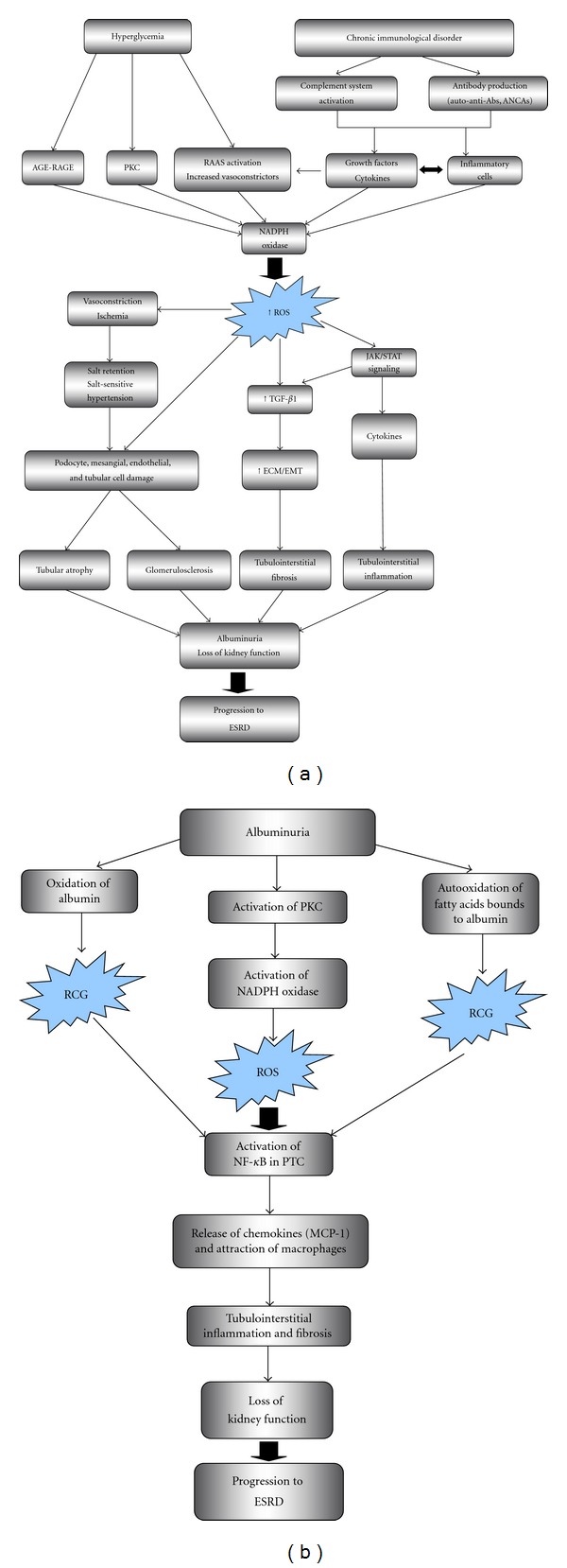Figure 1.

Overview of interrelation of ROS with other key pathogenic factors in kidney disease. (a) Role of ROS in diabetic nephropathy and immune-mediated glomerulonephritis. ROS are induced in renal cells in response to high glucose, AGE, and cytokines. PKC, NADPH oxidase, and mitochondrial metabolism are key to ROS generation. ROS activate signal transduction cascade and transcription factors, leading to upregulation of genes and proteins involved in renal cell injury, glomerular and interstitial extracellular matrix deposition, and recruitment of inflammatory cells, promoting albuminuria and progression of chronic kidney disease. (b) Role of albuminuria and ROS in tubular damage and progression of CKD. Albuminuria injures PTC and activates them to release chemokines that attract macrophages and promote tubulointerstitial fibrosis. Membrane NADPH oxidase is the main source of the ROS. It is possible the generation of other reactive species, as carbonyl groups derived from abnormal oxidation of albumin and fatty acids bound to albumin. Abs: antibodies, AGE: advanced glycation end products, ANCA: antineutrophil cytoplasmic antibodies, ECM: extracellular matrix, EMT: epithelial-mesenchymal transition, ESRD: end-stage renal disease, MCP-1: monocyte chemoattractant protein-1, NADPH: nicotinamide adenine dinucleotide phosphate, NF-kappa B: nuclear factor kappa B, PKC: protein kinase C, PTC: proximal tubular cell, RAAS: renin-angiotensin-aldosterone system, ROS: reactive oxygen species, RCG: reactive carbonyl groups, TGF-β1: transforming growth factor beta 1.
